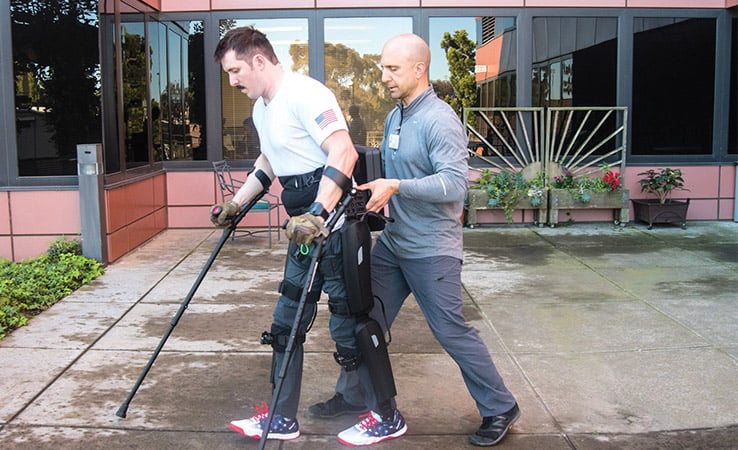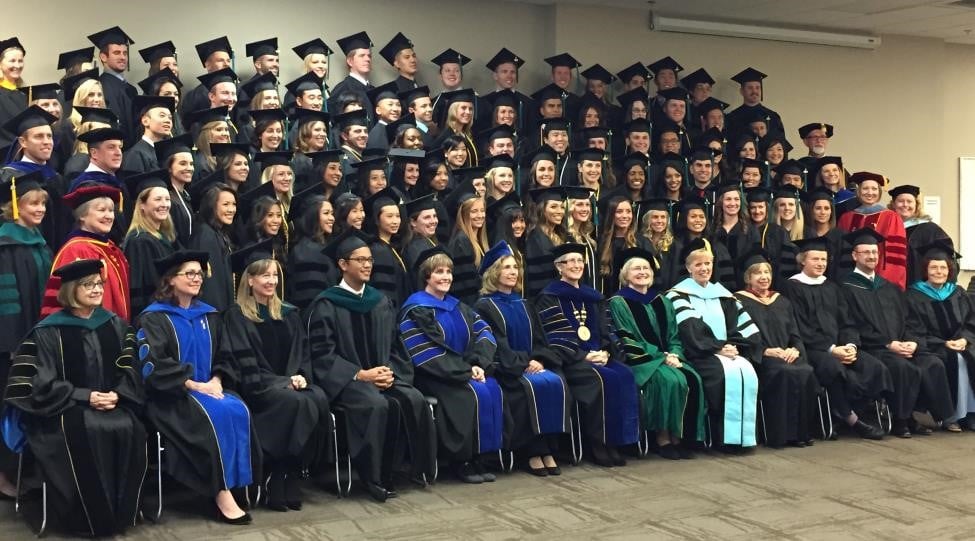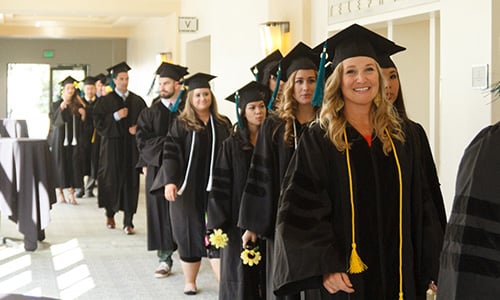 Dr. John Colaneri’s ties to the military run deep. His grandfather served in the Pacific theater during World War II, two of his uncles are veterans, and a cousin is an active duty member of the Navy. As a Doctor of Physical Therapy student on the San Marcos campus, he interned at the VA San Diego Healthcare System thanks to faculty members Dr. Kristen Johnson and Dr. Jim Mathews.
Dr. John Colaneri’s ties to the military run deep. His grandfather served in the Pacific theater during World War II, two of his uncles are veterans, and a cousin is an active duty member of the Navy. As a Doctor of Physical Therapy student on the San Marcos campus, he interned at the VA San Diego Healthcare System thanks to faculty members Dr. Kristen Johnson and Dr. Jim Mathews.
“It means something to me on a deeper level to serve those who have served our country,” says Colaneri, who graduated in 2013 and is a physical therapist in the Spinal Cord Injury Unit at the VA System’s La Jolla campus. There Colaneri is working with Lt. Junior Grade Brandon Myers, one of the first patients to use robotic legs to help him walk again.
What is Rehabilitation Robotics?
Rehabilitation robotics is a field of research committed to learning how the application of robotic devices can improve rehabilitation. A rehabilitation robot is an automatically operated machine created to help improve the movement of people with physical disabilities.
How Rehabilitation Robotics Can Help Catastrophic Injuries
A former Navy SEAL, Myers was injured in a training accident in 2015 that left him paralyzed, but this spring he took his first steps thanks to a personal, robotic exoskeleton created by ReWalk Robotics. “Motors at the hips and knees power the legs, and the device is controlled by leaning to activate sensors, which initiates the stepping sequence,” explains Colaneri. “A battery pack placed in the lower back area powers the device.”
Colaneri began working with the robotic assistive device and learning how to fit patients in 2015. Users go through extensive screening and training: 45 days of intensive in-clinic training followed by another 45 days of home training with a caregiver. Colaneri thinks that physical therapists increasingly will be using technological advancements in their practices. “There is unlimited potential to make devices more affordable, more compact, and easier for users to interface with.”
Working with patients whose lives have been catastrophically altered by spinal cord injury or disease has sparked Colaneri’s interest in helping his patients develop strategies to improve their quality of life. He recently began a two-year, part-time program at McGill University’s School of Occupational and Physical Therapy to earn a certificate in chronic pain management.
“My patients have so much on their plate: I would love to help them to effectively manage their pain and turn their focus back to living and thriving,” he says. “There is so much to learn about pain management and the brain’s influence, and I look forward to adding to evidence-based practice in that area.”








